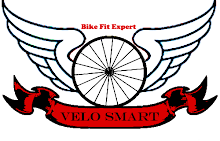By Richard A. Izzo, D.C., C.C.S.P.
During cycling, unlike running, it’s not just the bio-mechanics of the lower back and leg motion that is important, but the melding of human motion with machine. The biomechanics of cycling requires that the lower back and pelvis move in order for proper coordinated lower extremity motion. The anatomy of the lower back consists of muscles, tendons, ligaments, discs, and joint surfaces. For the purposes of this article we will concentrate on joints and muscles.
Soft tissue can shorten, tighten, weaken, hypertrophy, or be over stretched and strained. Muscles that have shortened can do less work. This is due to the fact that work is defined as force times distance. Thus, if the resting length of the muscle is shortened, the potential power generated is reduced. In cycling, the work is the distance per pedal stroke as measured by bike length traveled per stroke, or the power generated as measured in watts. An example of this is the cyclist whose hip flexors and quadriceps are tightened. Since there is less potential to do work (in this case, lengthen and contract a maximum distance) power is decreased, which means that it is harder to push a big gear. Since hip flexors originate in the lower back, when they tighten they can also cause lower back pain.
To analyze the normal pedal stroke lets use the analogy of a clock. From the one o’clock position to the three o’clock position the quadriceps contract with the downward pedal stroke. Force is transferred from the cranks to the wheels and you travel forward. The next important part of the pedal stroke is from 9 o’clock to 12 o’clock, where the hamstrings pull the crank on the upstroke. If one leg is not pushing or pulling the same as the other you will not have a smooth fluid pedal stroke. This loss of efficiency will affect the quality as well as quantity of motion. This creates “dead” spots in your pedal stroke, which decreases the torque you can produce.
Pelvic misalignment, short leg syndrome, tightened hamstrings, malalignment of the patella, or tightened lower back muscles can be the cause of these dead spots. Pelvic misalignment can cause a short leg syndrome. When one of your legs is shorter, the amount of force generated will not be equal. This can cause the body to compensate by recruiting other less efficient muscle groups to do the job. This added stress could cause overuse, inflammation, and over time, degenerative changes. With joint position being off, motion cannot occur normally due to the fact that more energy is necessary to do work (force times distance). The quality as well as the quantity of motion is decreased. Smooth, fluid, efficient motion, is not occurring, with the result being that your body is working harder than it should. There is a loss of energy to abnormal motion. This causes decreased performance, which comes into play when riding a century or a time trial.
Even when the symptoms of joint and muscle dysfunction are not evident, the problem may still exist, and it should be addressed and fixed before symptoms arise and degenerative changes occur. Chiropractic sports doctors check for these imbalances of the spine, soft tissue and extremities, and treat them with hands-on care, including physiotherapy, spinal adjustments, rehabilitative exercises, and stretching. A good approach for preventing injuries is to get regular checkups for musculoskeletal imbalances before symptoms occur, and follow a regular strengthening and flexibility program. Be sure that the bike you ride is properly fit to you as well as to your budget.
See you on the road.
Dr. Richard A. Izzo is a Board Certified chiropractic sports doctor with a practice in Rye Brook, NY.
Monday, December 15, 2008
Subscribe to:
Post Comments (Atom)

No comments:
Post a Comment